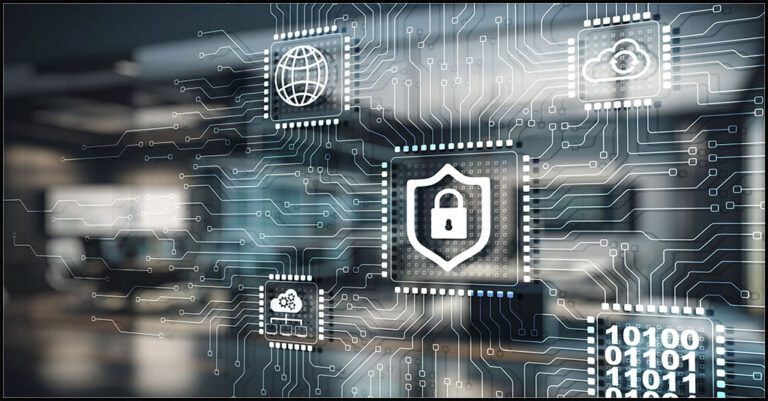Understanding the Differences Between SIEM, SOAR, Managed SOC, MDR, EDR, NDR and XDR

Gain Insight Into Which Technology is Right for You
Cybersecurity is one of the fastest-growing entities in today’s digital-first business landscape owing to the sharp uptick in the number of cyberattacks over the past few years. IT professionals know all too well just how relentless and sophisticated cyberattacks have become, especially with the adoption of AI-based tools, like ChatGPT and WormGPT, to launch effective phishing campaigns and create malicious code faster.
The growing concern for this widespread increase in cyberattacks and their implications has created a need for robust IT solutions to combat cybercrime. While that sounds like a simple enough task, accomplishing it is a whole other ball game. There are literally thousands of security solutions in the market, many utilizing variations of similar technologies. That can make it extremely difficult for an organization’s IT decision-makers to make a smart choice. To help you make the best decisions and achieve all your IT security goals hassle-free, this blog will explain everything you need to know about six common security technologies.
Six Powerful Cybersecurity Solutions
Sometimes, distinguishing between the specific roles of solutions like, for example, security orchestration, automation and response (SOAR) and endpoint detection and response (EDR), can throw IT professionals off, which doesn’t really bode well for an organization’s overall security posture.
Listed below are the six different kinds of security solutions IT pros should be fully familiar with before making any cybersecurity-related decisions.
- Security information and event management (SIEM)
- Security orchestration, automation and response (SOAR)
- Managed security operations center (SOC)
- Endpoint detection and response (EDR)
- Network detection and response (NDR)
- Extended detection and response (XDR)

See why choosing a smarter SOC is a smart business decision. DOWNLOAD AN EBOOK>>
Understanding SIEM, SOAR, managed SOC and MDR
Let’s begin with SIEM, SOAR, managed SOC, EDR and NDR, some of the most often used security technologies available today.
Security information and event management (SIEM): SIEM is a comprehensive solution designed to collect, analyze and interpret log data from various sources across an organization’s entire IT infrastructure. It provides real-time insights into security events, aiding in the early detection of potential threats.
Data collection, normalization, parsing, correlation engines and customizable dashboards are the main components of SIEM. These components collectively empower SIEM to excel in threat detection, incident response, compliance management and forensic analysis. It helps IT professionals centralize visibility, detect threats early, carry out efficient incident response and streamline compliance management as well.
Security orchestration, automation and response (SOAR): SOAR integrates various security tools and technologies to quicken and automate incident response processes. It’s a multifaceted approach to enhance the efficiency of security operations by orchestrating workflows and automating repetitive, redundant tasks. SOAR systems bring together threat intelligence, case management and automation to create a cohesive and synchronized response to security incidents
Its three components — orchestration, automation and response — enable the coordination of disparate security tools, reduce manual intervention in routine tasks, and ensure a swift and synchronized reaction to security incidents. SOAR helps increase operational efficiency, accelerate incident response times, reduce workload on security teams and enhance overall cybersecurity resilience.
Managed security operations center (SOC): Also known as a Managed Detection and Response (MDR), a managed SOC is a security service through an external partner, offering 24/7/365 monitoring, threat detection and expert incident response. Managed SOC services provide cost-effectiveness and scalability, making them an ideal choice for organizations managing security for multiple clients like MSPs or IT professionals without deep cybersecurity knowledge. Choosing a managed SOC also frees an MSP or business from the cumbersome process of finding (and paying for) cybersecurity specialists during the ongoing talent shortage. With round-the-clock monitoring by a team of security experts, managed SOC ensures continuous monitoring with the ability to adapt to evolving threats, so as not to bog down an MSP with alerts.
Partnering with a third party requires IT professionals to relinquish a certain amount of control but also streamlines their ability to scale and offer the service immediately to clients without dealing with the many challenges that standing up your own SOC creates.

See the challenges companies face & how they’re overcoming them in our Kaseya Security Survey Report 2023 DOWNLOAD IT>>
All about advanced threat detection and response with EDR and NDR
With cybercriminals growing increasingly tenacious in their attempts to disrupt businesses globally, cybersecurity professionals, too, are strongly focusing on strengthening their defenses with these advanced threat detection and response solutions.
Endpoint detection and response (EDR): EDR solutions focus on securing individual devices within an organization’s network. They are designed to provide real-time visibility into endpoint activities, enabling organizations to detect, investigate and respond to advanced threats. By monitoring and analyzing activities on computers, servers and other endpoint devices, EDR helps organizations fortify their security posture and swiftly respond to potential security incidents.
EDR solutions include a unique combination of continuous monitoring, behavior analysis, threat detection and automated response. They are built to actively monitor endpoint activities while analyzing patterns and behaviors to identify potential insider threats. They also provide detailed insights into the activities of individual devices, facilitating rapid detection of malicious behavior. Combining EDR with a managed SOC is a winning move to ensure comprehensive visibility and threat detection.
Network detection and response (NDR): NDR actively analyzes network traffic to detect and mitigate malicious activities. By employing advanced analytics and machine learning, NDR solutions provide organizations with the means to identify and respond to threats that target their network, ensuring comprehensive protection against a wide range of cyberthreats.
NDR comprises packet capture and analysis, anomaly detection, threat intelligence integration and real-time monitoring. These solutions actively inspect network traffic, identifying patterns and anomalies that may indicate malicious behavior and play a pivotal role in detecting network-based attacks, lateral movement and data exfiltration.

Follow the path to see how Managed SOC heroically defends businesses from cyberattacks. GET INFOGRAPHIC>>
A comprehensive security framework: Extended detection and response (XDR)
A newer arrival to the cybersecurity space, XDR solutions are built upon the foundations of EDR, recognizing the limitations of solely focusing on endpoint security. While EDR primarily addresses threats at the endpoint level, XDR takes it a step further by integrating data from diverse sources, including endpoints, networks and cloud environments. This evolution acknowledges the interconnected nature of modern IT environments and the need for correlating information across disparate security layers for a comprehensive and effective threat detection and response strategy.
An XDR approach empowers organizations with enhanced visibility by providing a consolidated view of security events across endpoints, networks and their cloud environments, enabling precise threat detection. Secondly, XDR facilitates a coordinated and effective response to incidents by correlating data and automating response actions. Lastly, XDR supports a proactive security stance, allowing organizations to stay ahead of evolving threats by leveraging advanced analytics and threat intelligence. Choosing XDR can be a strategic move towards a more interconnected and adaptive security framework that may be beneficial to businesses with certain industry requirements.

Explore the nuts and bolts of ransomware and see how a business falls victim to an attack. GET EBOOK>>
5 Things to consider when selecting your ideal security solution
While each of these security solutions — SIEM, SOAR, Managed SOC, EDR, NDR and XDR — offer many benefits in improving cyber resilience, one common downside across many of these solutions is the potential for high implementation and operational costs. Deploying and maintaining these sophisticated security measures often requires a significant investment in terms of both financial resources and skilled personnel.
Small to medium-sized enterprises, in particular, may find the cost of acquiring, implementing and managing many advanced security solutions to be a substantial barrier. Implementing many of these technologies creates additional burdens like hiring skilled personnel, paying for ongoing training and staying on top of frequent updates to keep pace with evolving threats. In today’s challenging economy, IT decision-makers must tread carefully when it comes to adopting any of these advanced technologies.
Here are five important factors to consider before choosing a security solution.
- Organizational needs and objectives: Consider your organization’s specific cybersecurity needs and objectives. Different solutions address different security concerns, and some solutions may not be ideal for a company’s purposes. Make sure the chosen security technology aligns with your organization’s strategic IT goals now and ensures that you’re future-ready.
- Scalability and flexibility: Assess the scalability and flexibility of the security solution. Ensure that it can adapt to the evolving needs of your organization as it grows as well as the demands that will be placed upon it now and in the future as cyber threats evolve. A scalable solution can accommodate increased data volumes and expanding network infrastructure, while flexibility allows for integration with existing and future technologies.
- Integration and interoperability: This is extremely important, especially considering how problematic legacy systems are. The compatibility of the security solution with your existing IT infrastructure and other security tools can ensure seamless integrations and a cohesive security environment, preventing silos of information and enhancing the overall effectiveness of the cybersecurity strategy.
- Ease of use and management: An intuitive interface and streamlined management processes contribute to the efficient operation of the solution. If the technology you choose requires specialized security expertise, hiring and training requirements for the security team should also be taken into account. Alternatively, some choices like a smart managed SOC may clear many obstacles from the board at once, making it easy for you to gain major security advantages without a major hit to your budget.
- Cost-benefit analysis: Perform a thorough cost-benefit analysis, taking into consideration upfront expenses and ongoing operational costs. Evaluate the total cost of ownership, including licensing fees, hardware, training and maintenance, and make sure that the solution you choose provides a positive ROI.

What cybercriminal tricks do employees fall for in phishing simulations? Find out in this infographic. GET IT>>
RocketCyber Managed SOC is Your Ideal Cybersecurity Partner
RocketCyber Managed SOC is the most advanced managed SOC on the market, offering compatibility, a combination of advanced threat detection and response and seamless integration with your professional services automation (PSA) system. Gain access to world-class cybersecurity talent without a big upfront investment or added payroll cost.
RocketCyber Managed SOC includes:
- Continuous monitoring: Round-the-clock protection with real-time advanced threat detection.
- Expertise on demand: Get the cybersecurity expertise you need to keep your organization out of trouble without adding to your headcount.
- Breach detection: Thwart sophisticated and advanced threats that bypass traditional AV and perimeter security solutions.
- Threat hunting: Focus on other pressing matters while an elite cybersecurity team proactively hunts for malicious activities.
- Actionable intelligence: Alerts align with the MITRE ATT&CK framework, bringing clarity that enables a fast response.
- No hardware requirements: Patent-pending, cloud-based technology eliminates the need for costly and complex on-premises hardware.
To learn more about cybersecurity solutions and how you can strengthen your cyberdefenses, visit www.rocketcyber.com

Read case studies of MSPs and businesses that have conquered challenges using Kaseya’s Security Suite. SEE CASE STUDIES>>

Our Partners typically realize ROI in 30 days or less. Contact us today to learn why 3,850 MSPs in 30+ countries choose to Partner with ID Agent!
Check out an on-demand video demo of BullPhish ID or Dark Web ID WATCH NOW>>
See Graphus in action in an on-demand video demo WATCH NOW>>
Book your demo of Dark Web ID, BullPhish ID, RocketCyber or Graphus now!